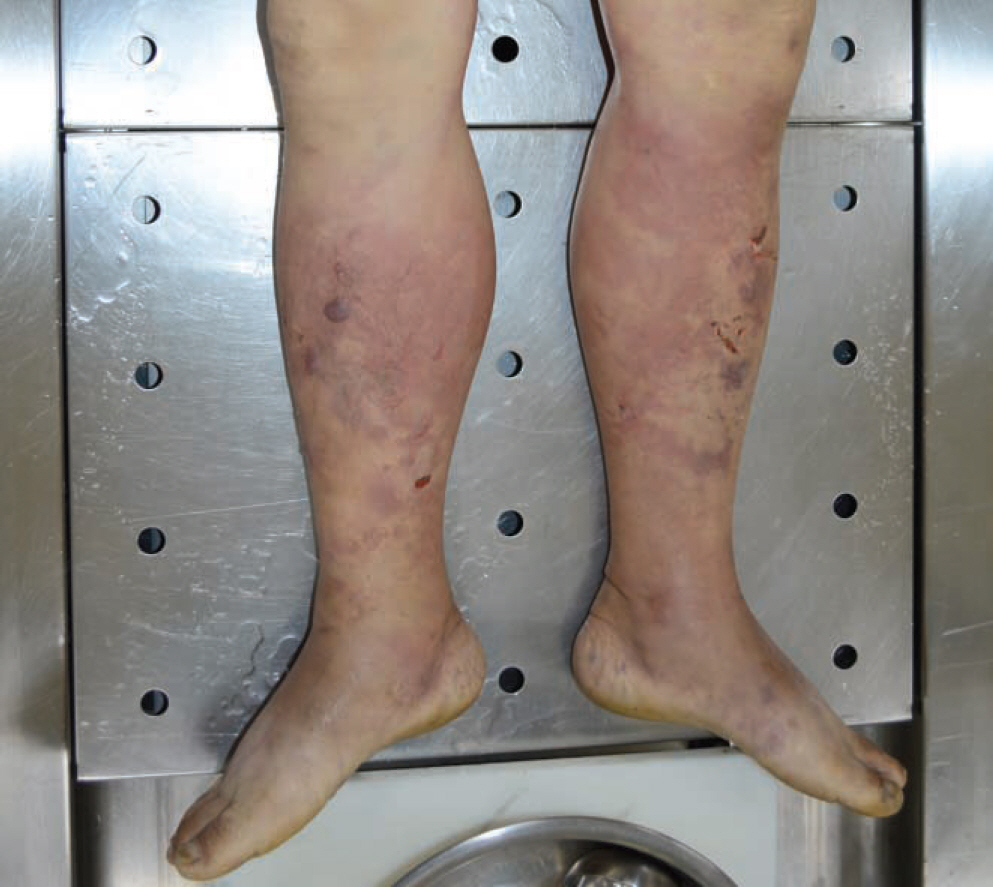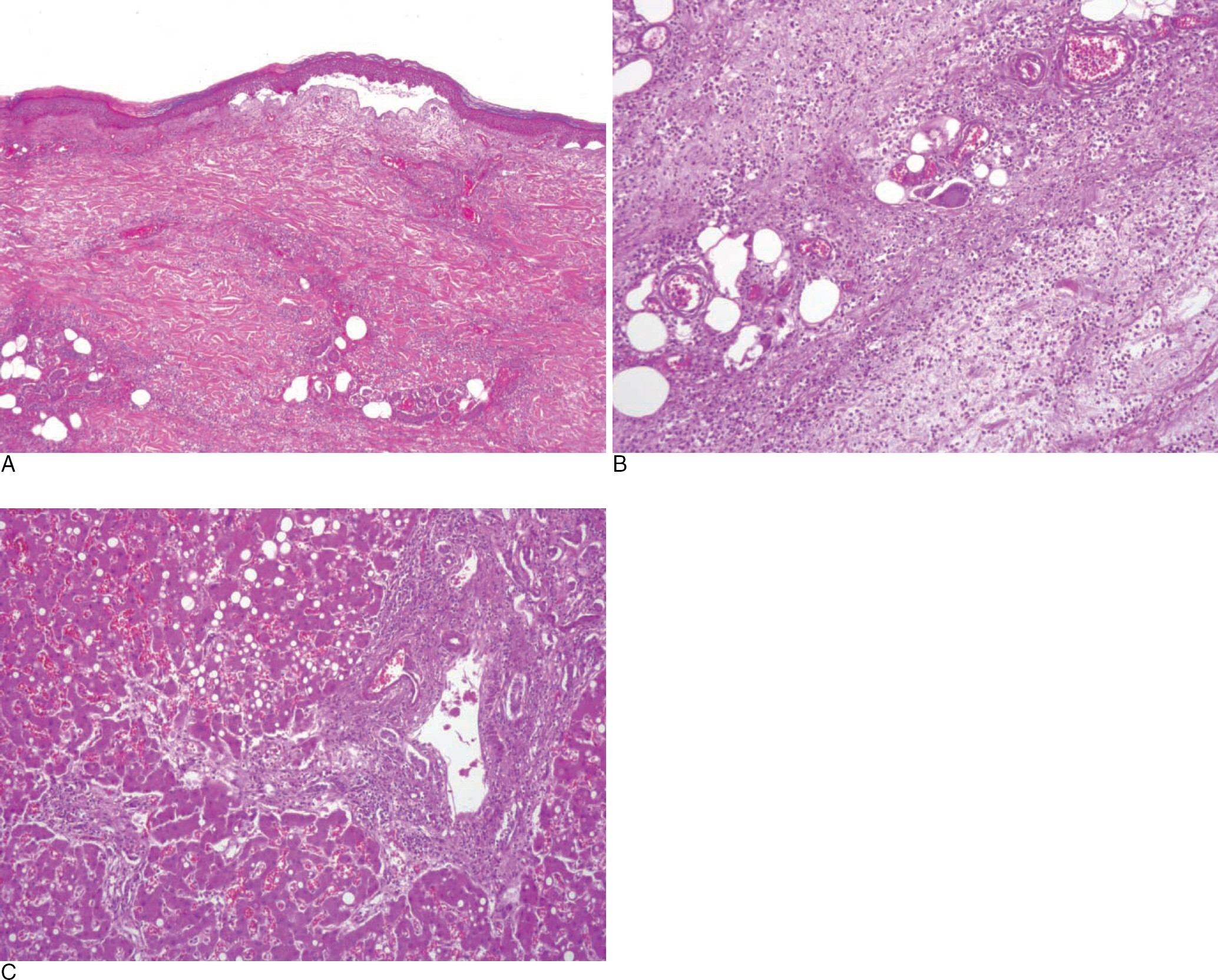Korean J Leg Med.
2015 May;39(2):45-48. 10.7580/kjlm.2015.39.2.45.
Vibrio vulnificus Sepsis: An Autopsy Case
- Affiliations
-
- 1Forensic Medicine Division, Gwangju Institute, National Forensic Service, Jangseong, Korea. pdrdream@gmail.com
- 2Forensic DNA Division, National Forensic Service, Wonju, Korea.
- 3Department of Forensic Medicine, Chonnam National University Medical School, Gwangju, Korea.
- 4Institute of Forensic Medicine, Pusan National University School of Medicine, Busan, Korea.
- KMID: 1794323
- DOI: http://doi.org/10.7580/kjlm.2015.39.2.45
Abstract
- Vibrio vulnificus infection can lead to the rapid expansion of cellulitis or sepsis and can be lethal. Vibrio vulnificus is transmitted through seawater or ingestion of raw or undercooked shellfish. We experienced an uncommon case of death due to Vibrio sepsis, which was confirmed by autopsy. A 56-year-old man who was a sailor was found dead in a fishing boat. Autopsy was performed 3 days later. External examination revealed a few blisters and erythematous lesions on both legs. Internal examination revealed a fatty liver and edema of the legs. The skin lesions on the legs showed blisters that extended from the epidermis to the dermis, accompanied by massive acute inflammation in the dermis and subcutaneous tissue with multinuclear giant cells, as noted on the histologic examination. Vibrio vulnificus was isolated from postmortem blood and subcutaneous tissue of the leg. To the best of our knowledge, this is the first autopsy case in Korea in which Vibrio vulnificus was isolated from postmortem blood. Herein, we present a case of sepsis due to Vibrio vulnificus which was confirmed by autopsy, pathological findings, and postmortem microbiological culture.
Keyword
MeSH Terms
Figure
Reference
-
1. Kim DM, Hong SJ. Vibrio vulnificus sepsis. Korean J Med. 2012; 82:671–9.2. Klontz KC, Lieb S, Schreiber M, et al. Syndromes of Vibrio vulnificus infections: clinical and epidemiologic features in Florida cases, 1981-1987. Ann Intern Med. 1988; 109:318–23.3. Lee SJ, Jo GR, Huh GY. Autopsy case: Vibrio vulnificus sepsis confirmed by autopsy. Korean J Med. 2009; 77:649–53.4. Tajiri T, Tate G, Masunaga A, et al. Autopsy cases of fulminant bacterial infection in adults: clinical onset depends on the virulence of bacteria and patient immune status. J Infect Chemother. 2012; 18:637–45.
Article5. Tajiri T, Tate G, Akita H, et al. Autopsy cases of fulminant-type bacterial infection with necrotizing fasciitis: group A (beta) hemolytic Streptococcus pyogenes versus Vibrio vulnificus infection. Pathol Int. 2008; 58:196–202.
Article6. Manifold IH, Triger DR, Underwood JC. Kupffer-cell depletion in chronic liver disease: implications for hepatic carcinogenesis. Lancet. 1983; 2:431–3.
Article7. Riedel S. The value of postmortem microbiology cultures. J Clin Microbiol. 2014; 52:1028–33.
Article8. Tang RK, Liu Y, Liu YZ, et al. Evaluation of postmortem heart blood culture in a Chinese population. Forensic Sci Int. 2013; 231:229–33.
Article
- Full Text Links
- Actions
-
Cited
- CITED
-
- Close
- Share
- Similar articles
-
- Autopsy case: Vibrio vulnificus sepsis confirmed by autopsy
- Effect of Hydrogen Ion Concentration on the Growth of Vibrio vulnificus
- Vibrio Vulnificus Sepsis
- Epidemiology and clinical characteristics of vibrio vulnificus septicemia in Pusan and Kyungnam area
- Generalized Erythema Multiforme-like Eruption is the Novel Cutaneous Manifestation of Vibrio Vulnificus Septicemia



